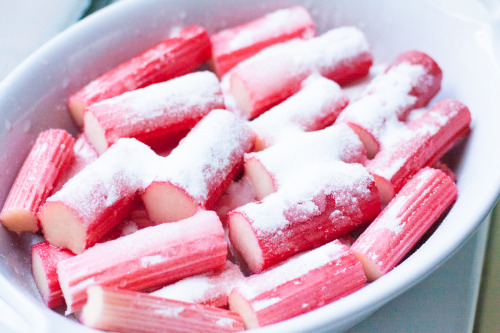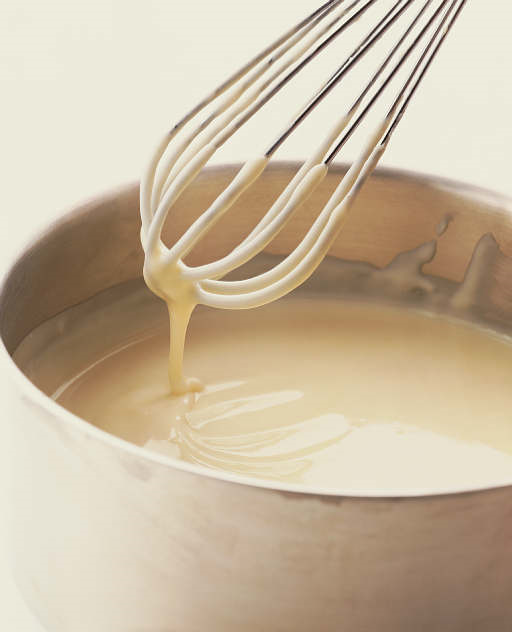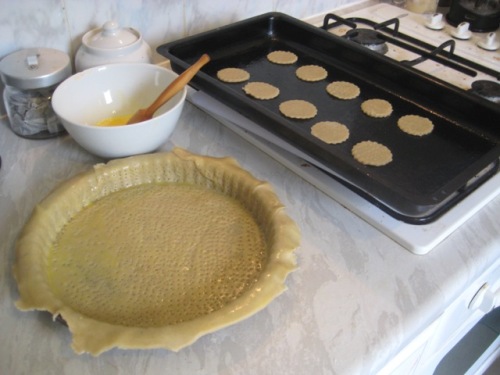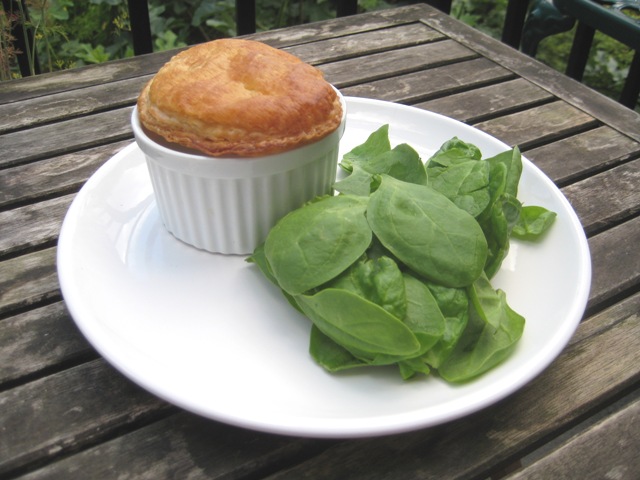Rhubarb crumble with vanilla custard
 Tuesday, January 26, 2016 at 7:52AM
Tuesday, January 26, 2016 at 7:52AM 
What is your ultimate comfort food? This is one of the questions I have asked all the people I have interviewed in the series I’m writing for Borough Market. My interviewees all come from different parts of the world, or have parents who do, so their answers differ a lot, but one thing they all share in common is that it tends to be something warming and filling.
“I don’t think you can get any better than a rhubarb crumble,” says Paul Wheeler, of Paul Wheeler’s Fresh Supplies. “If there was one comfort food, yeah that’d probably be it.” What is it that makes rhubarb crumble such a classic? Perhaps it is because the rhubarb is naturally very tart and contrasts perfectly with the sweet crumble topping and accompaniments, such as custard or vanilla ice cream.
I usually add nuts and oats to my crumble, but in this recipe I go for a shortbread topping. I think there is something elegant about rhubarb; perhaps it’s natural acidity and bright pink colour. A shortbread crumble seems to me to complement this, it seems more refined somehow.
 Vix |
Vix |  3 Comments |
3 Comments | 


